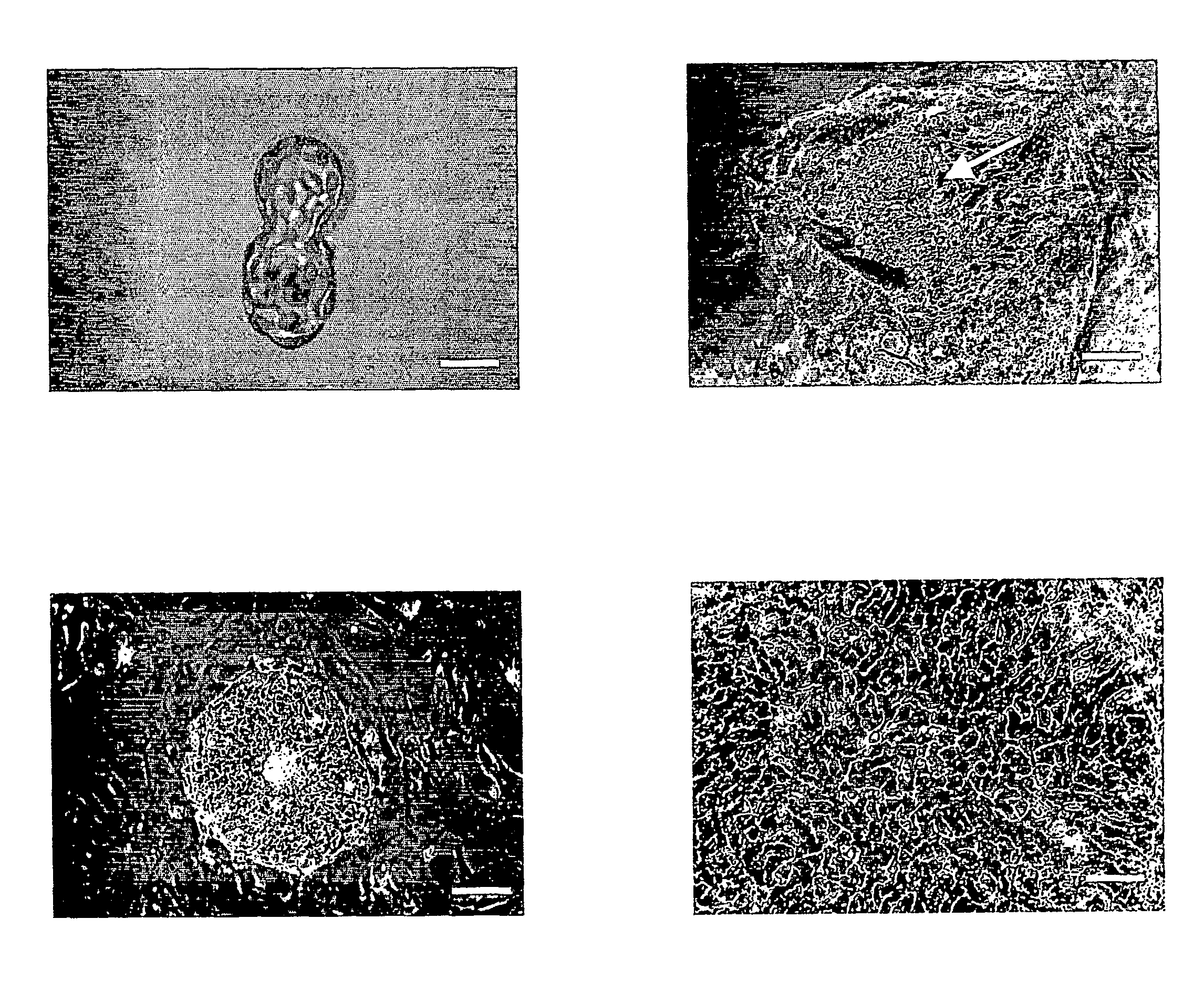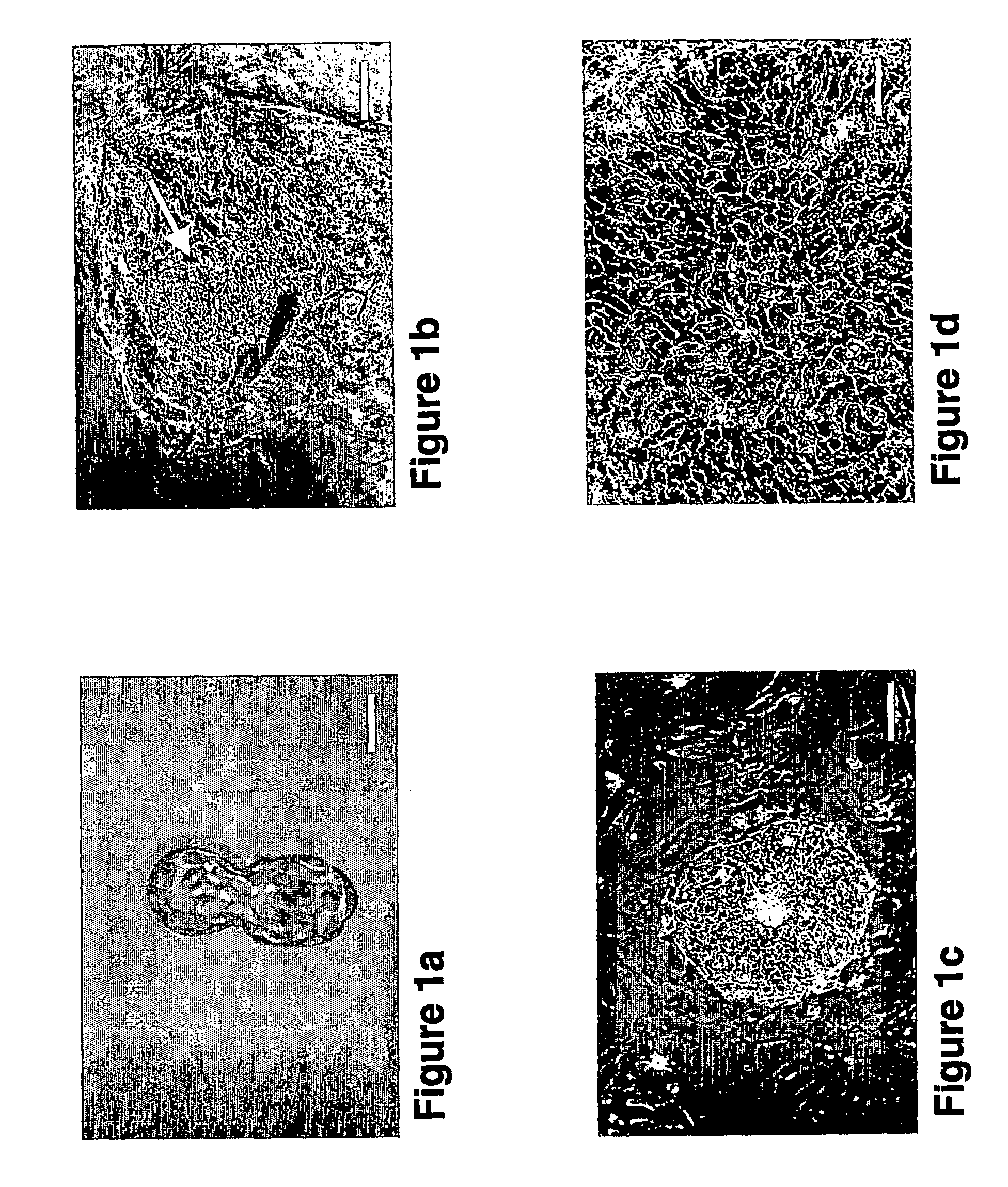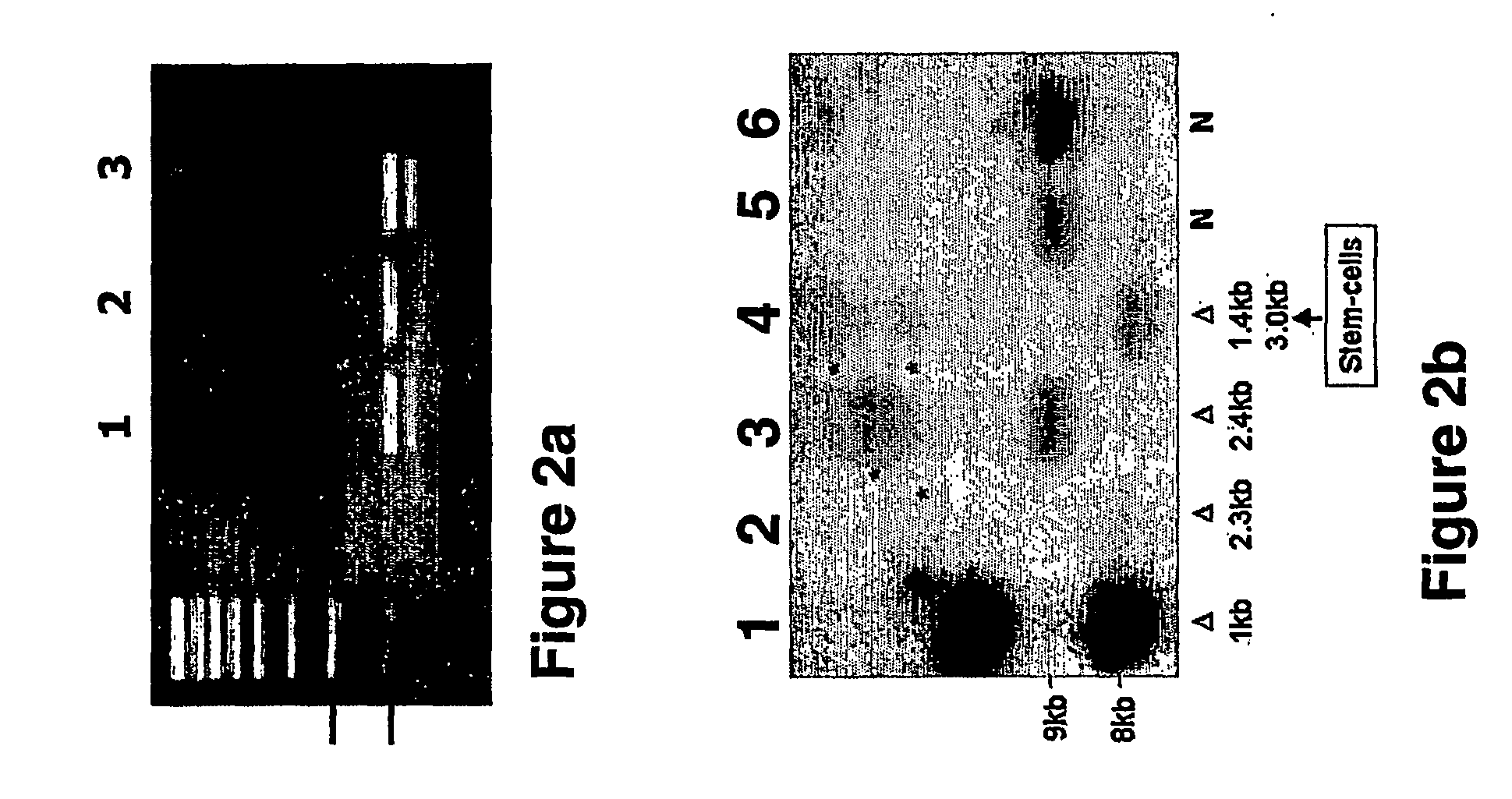Methods of Generating Stem Cells and Embryonic Bodies Carrying Disease-Causing Mutations and Methods of Using same for Studying Genetic Disorders
a technology of embryonic stem cells and embryonic bodies, which is applied in the field of human embryonic stem cells, can solve the problems of wasting voluntary muscles, symmetric muscle weakness and wasting, and the presently available disease models are not suitable for developing cures for genetic disorders
- Summary
- Abstract
- Description
- Claims
- Application Information
AI Technical Summary
Benefits of technology
Problems solved by technology
Method used
Image
Examples
example 1
Generation of Human Embryonic Cell Lines Harboring Genetic Mutations
[0198] Human ES cell lines were generated from discarded embryos blastocysts following preimplantation genetic diagnosis (PGD) and the presence of the disease-causing-mutations in the ESCs was determined, as follows.
[0199] Materials and Experimental Methods
[0200] Blastocyst cultivation—In vitro fertilization was performed by sperm injection (ICSI) into oocytes retrieved following gonadotrophin-induced ovarian stimulation. Injected oocytes (18-19 hours post-ICSI) were monitored for the presence of pronuclear formation and zygotes with normal pronucleai were transferred (as drops under oil) for blastocyst cultivation in the presence of the Cook growth medium [specialized Cook media for insemination (IM), growth (GM) and blastocyst development (BM), Queensland, Australia].
[0201] Seventy-six discarded embryos were donated by the PGD program at the Rambam Medical Center; the donor couples signed consent forms which w...
example 2
Embryoid Bodies and Teratomas can be Generated from Human ES Cell Lines Harboring Disease-Causing-Mutations
[0217] To further test the suitability of human ES cell lines harboring disease-causing-mutations to differentiate into all three embryonic germ layers, ES cell lines were transferred to suspension culture or were injected into SCID mice, and the expression pattern of several differentiation markers was determined in the resulting embryoid bodies or teratomas, respectively.
[0218] Materials and Experimental Methods
[0219] Immunohistochemistry—was performed as described in Example 1, hereinabove.
[0220] EB formation—ES cells from four to six confluent wells (40-60 c2m) were collected using 1 mg / ml type IV Collagenase (Invitrogen), further broken into small clumps using 1000 μl Gilson pipette tips, and cultured in suspension in 58-mm Petri dishes (Greiner, Germany). EBs were grown in 80% KO-DMEM, 1 mM L-glutamine, 0.1 mM β-mercaptoethanol, 1% non-essential amino acid stock (all ...
PUM
| Property | Measurement | Unit |
|---|---|---|
| pH | aaaaa | aaaaa |
| pH | aaaaa | aaaaa |
| diameter | aaaaa | aaaaa |
Abstract
Description
Claims
Application Information
 Login to View More
Login to View More - R&D
- Intellectual Property
- Life Sciences
- Materials
- Tech Scout
- Unparalleled Data Quality
- Higher Quality Content
- 60% Fewer Hallucinations
Browse by: Latest US Patents, China's latest patents, Technical Efficacy Thesaurus, Application Domain, Technology Topic, Popular Technical Reports.
© 2025 PatSnap. All rights reserved.Legal|Privacy policy|Modern Slavery Act Transparency Statement|Sitemap|About US| Contact US: help@patsnap.com



